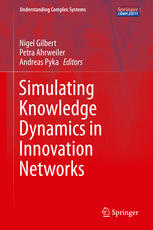

Most ebook files are in PDF format, so you can easily read them using various software such as Foxit Reader or directly on the Google Chrome browser.
Some ebook files are released by publishers in other formats such as .awz, .mobi, .epub, .fb2, etc. You may need to install specific software to read these formats on mobile/PC, such as Calibre.
Please read the tutorial at this link: https://ebookbell.com/faq
We offer FREE conversion to the popular formats you request; however, this may take some time. Therefore, right after payment, please email us, and we will try to provide the service as quickly as possible.
For some exceptional file formats or broken links (if any), please refrain from opening any disputes. Instead, email us first, and we will try to assist within a maximum of 6 hours.
EbookBell Team

4.0
86 reviewsThe competitiveness of firms, regions and countries greatly depends on the generation, dissemination and application of new knowledge. Modern innovation research is challenged by the need to incorporate knowledge generation and dissemination processes into the analysis so as to disentangle the complexity of these dynamic processes. With innovation, however, strong uncertainty, nonlinearities and actor heterogeneity become central factors that are at odds with traditional modeling techniques anchored in equilibrium and homogeneity.
This text introduces SKIN (Simulation Knowledge Dynamics in Innovation Networks), an agent-based simulation model that primarily focuses on joint knowledge creation and exchange of knowledge in innovation co‐operations and networks. In this context, knowledge is explicitly modeled and not approximated by, for instance, the level of accumulated R&D investment. The SKIN approach supports applications in different domains ranging from sector-based research activities in knowledge-intensive industries to the activities of international research consortia engaged in basic and applied research.
Following a general description of the SKIN model, several applications and modifications are presented. Each chapter introduces in detail the structure of the model, the relevant methodological considerations and the analysis of simulation results, while options for empirically validating the models’ structure and outcomes are also discussed. The book considers the scope of further applications and outlines prospects for the development of joint modeling strategies.